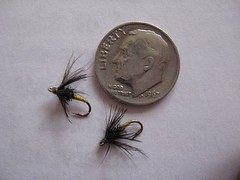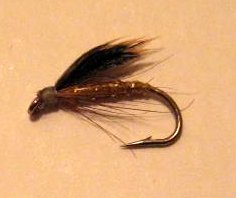Moved to WordPress: New Address
http://brownhackle.wordpress.com
This is an archive for semi-original fly patterns that have worked well for me, including the Brown Hackle Bee. If you have any questions about tying or fishing them, contact me at bonamici@gmail.com. You may also see occasional posts about other hobbies, such as knifemaking and bicycle riding. Here's a Site Feed.




Labels: bass, largemouth, Maine, smallmouth
Tail: Golden pheasant red breast feather fibersnote: my example in the photo uses natural gray sheep's wool rather than muskrat.
Body: Blue-gray dubbing (muskrat) ribbed with oval silver tinsel
Hackle: Natural black or dark gray
Wing: Gray goose or gray squirrel tail
This was Peter Schwab's favorite steelhead pattern. he called it, "the most universally successful fly I have ever seen." For Schwab it was best a clear water summer-run dressing, and he fished it at the exclusion of many patterns he had designed and made nationally famous. (p.95)
Labels: steelhead



Labels: fillet knife


